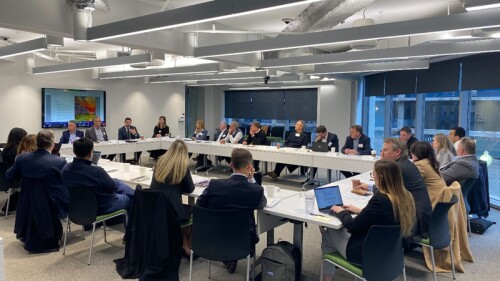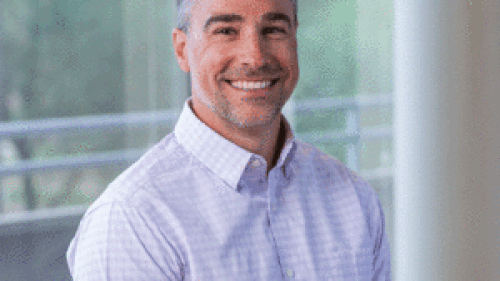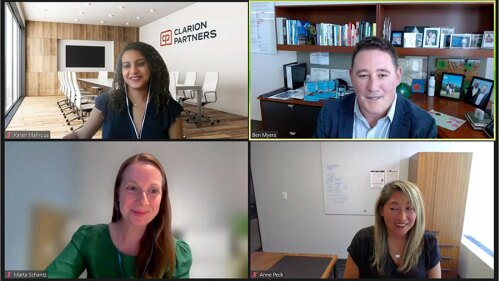The global impact on human health and economic stability resulting from the COVID-19 outbreak is likely to quickly and dramatically elevate health and wellness as key factors influencing urban design and development as well as building management and operations, according to industry experts convened by ULI for a March 24 webinar on the impacts of the pandemic.
The event, “Confronting COVID-19: Insights for Real Estate Leaders,” was the first of a series of webinars being offered by the Institute’s Building Healthy Places Initiative to explore how various aspects of the real estate industry are being affected by the virus and the industry’s response.
The webinar is free to access at ULI Knowledge Finder.
This webinar was recorded the same week that the United States overtook China for the most confirmed cases of the virus.
An overview of the extent of the health crisis and the related unknowns was provided by Catherine Troisi, associate professor at the University of Texas School of Public Health in Houston. Given numerous uncertainties regarding the virus, including how easily it can be transmitted, variations in symptoms and levels of severity, length of time it remains in the environment, when it will peak, and whether it might subside in the summer and return in the fall, there is no easy way to predict a return to normalcy, she said.
“There is a lot that we do not know,” Troisi said.
While a vaccine and antivirals are being pursued as long-term solutions, Troisi emphasized that for the short term, physical distancing is and will remain the best way to slow the spread of the virus. She noted that staying apart may be necessary for as long as two months to have a meaningful effect. The extent of the economic ramifications will be determined by people’s willingness to comply with social distancing to help contain the virus, Troisi added. “As a society, we have to make difficult decisions about whether business or health is our priority. It is a continuum, and we have to decide where we are on that continuum. The world is in this together, and we have to work together to overcome this.”
Whitney Austin Gray, senior vice president at the International WELL Building Institute (IWBI) in New York City, discussed the role of places in helping to prevent and prepare for health-related crises as well as in aiding resilience to and recovery from the crises. Given the number of factors—such as urbanization and climate change—that are altering living environments, the trend of pandemics “may just be starting,” she said. “We have an opportunity to learn from what is happening now and make our buildings and our communities safer for the future.”
Gray noted that a key lesson from the coronavirus is that “places matter,” in terms of how a building’s location and design either increase or decrease vulnerability to the illness; and how well living spaces serve as places for quarantining and teleworking. The real estate community, she said, has a key role to play with thoughtful design, development, and management practices that promote healthier environments.
Gray pointed to the WELL Building Standard, one of the first building certifications focused on human health, as a resource that provides real estate professionals with specifics on creating, maintaining, and measuring health and wellness in buildings. The certification focuses on several concepts such as air and water quality, natural light access, ease of movement, thermal comfort, cleanliness, noise level, and promotion of community. Making these “invisible” factors more “visible” through building performance testing such as that provided by the certification “will become critical” in the wake of the coronavirus, she said.
IWBI’s approach to placemaking is based on four pillars—prevention, preparedness, resilience, and recovery. Going forward, Gray predicted that each of the pillars will become even more important elements of placemaking—in terms of prevention, a greater emphasis will be placed on cleaner air, cleaner person-to-person contact, and cleaning protocols; regarding preparedness, being better prepared to deal with pandemics or other disruptive events by having in place policies to maintain continuity; and in terms of resilience and recovery, being equipped to help individuals, organizations, and communities adapt to changing circumstances and provide the best environment for mental as well as physical health.
“We have an incredible call to action around the role that places make around the world,” Gray said.
Going forward, each of the pillars will become even more important elements of placemaking, Gray said. Prevention will involve a greater emphasis on cleaner air, cleaner person-to-person contact, and cleaning protocols; preparedness will involve being better prepared to deal with pandemics or other disruptive events by having in place policies to maintain continuity; and resilience and recovery will involve strategies to help individuals, organizations, and communities adapt to changing circumstances and provide the best environment for mental as well as physical health. “We have an incredible call to action around the role that places make around the world,” Gray said.
Susan Bazak, principal at Bazak Consulting in Newcastle, Ontario, Canada, provided an overview of emergency management strategies that can be applied by commercial real estate professionals, including key actions that can be implemented immediately and preparation tactics for future events. She noted that the coronavirus pandemic fits within the larger framework of emergency management, which is defined by the National Fire Protection Association as “an ongoing process to prevent, mitigate, prepare for, respond to, maintain continuity during, and recover from an incident that threatens life, property, operations, information, or the environment.”
Adequately responding to the virus requires a “whole society” approach that involves the health sector to reduce health consequences; individuals, families, and communities to reduce the risk to people; and others sectors such as commercial real estate to minimize the adverse impacts on nonhealth sectors, Bazak said.
Although efforts continue to contain the virus and prepare for its effects, the focus appears to be shifting to mitigation efforts to reduce the virus’s impacts and allow businesses and communities to function as much as possible, she noted.
Bazak cited three critical components of mitigation: protecting the health and safety of stakeholders such as employees and service providers with policies that are consistent with COVID-19 guidance from the Centers for Disease Control and Prevention; communicating clearly and accurately to stakeholders on prevention; and ensuring business continuity by determining essential functions and roles, cross-training staff to perform essential functions, staggering work hours to practice social distancing, and planning for further suspensions of operations and service/supply disruptions.
Preparing for the future will entail including the growing risk of infectious diseases in business planning, reducing exposure to diseases by improving the resilience of individuals and buildings, seeking opportunities for enhanced public/private cooperation to strengthen global health security, and planning for recovery by amending procedures and protocols based on lessons learned from this experience, Bazak said. “We need to plan for subsequent waves of this illness with varying severity levels, as well as an increase in the frequency and diversity of disease outbreaks in the future,” she said.
ULI’s Building Healthy Places Initiative was created in 2013 to leverage the power of the Institute’s global networks to shape projects and places in ways that improve the health of people and communities. According to Rachel MacCleery, a ULI senior vice president who oversees the initiative, the goal of ULI’s webinar series on COVID-19 is to help members understand the role they can play in helping to slow the spread of the disease, help them navigate the long- and short-term impacts of the crisis, and help them understand how they can play a role in minimizing adverse impacts on vulnerable people.
“This crisis has underscored the importance of enhancing social equity, reducing inequality, and protecting vulnerable people. These considerations are crucial now as we navigate this crisis, and they will be critical going forward as we work to build a more just and equitable future,” MacCleery said.
The next webinar in the series, “Confronting COVID-19: Healthy Buildings—Optimizing Mental Health,” is scheduled for March 31 from 1 p.m. to 2:15 p.m. Eastern Daylight Time. It will be followed by “Considerations for Multifamily and Affordable Housing,” scheduled for April 7 from 1 p.m. to 2:15 p.m. Eastern Daylight Time. The webinars are free of charge.
For more information related to COVID-19 and real estate, visit Public Health and Real Estate: Resources on COVID-19 at uli.org.
TRISH RIGGS, former senior vice president of communications at ULI, is now a freelance writer based in Falls Church, Virginia.




